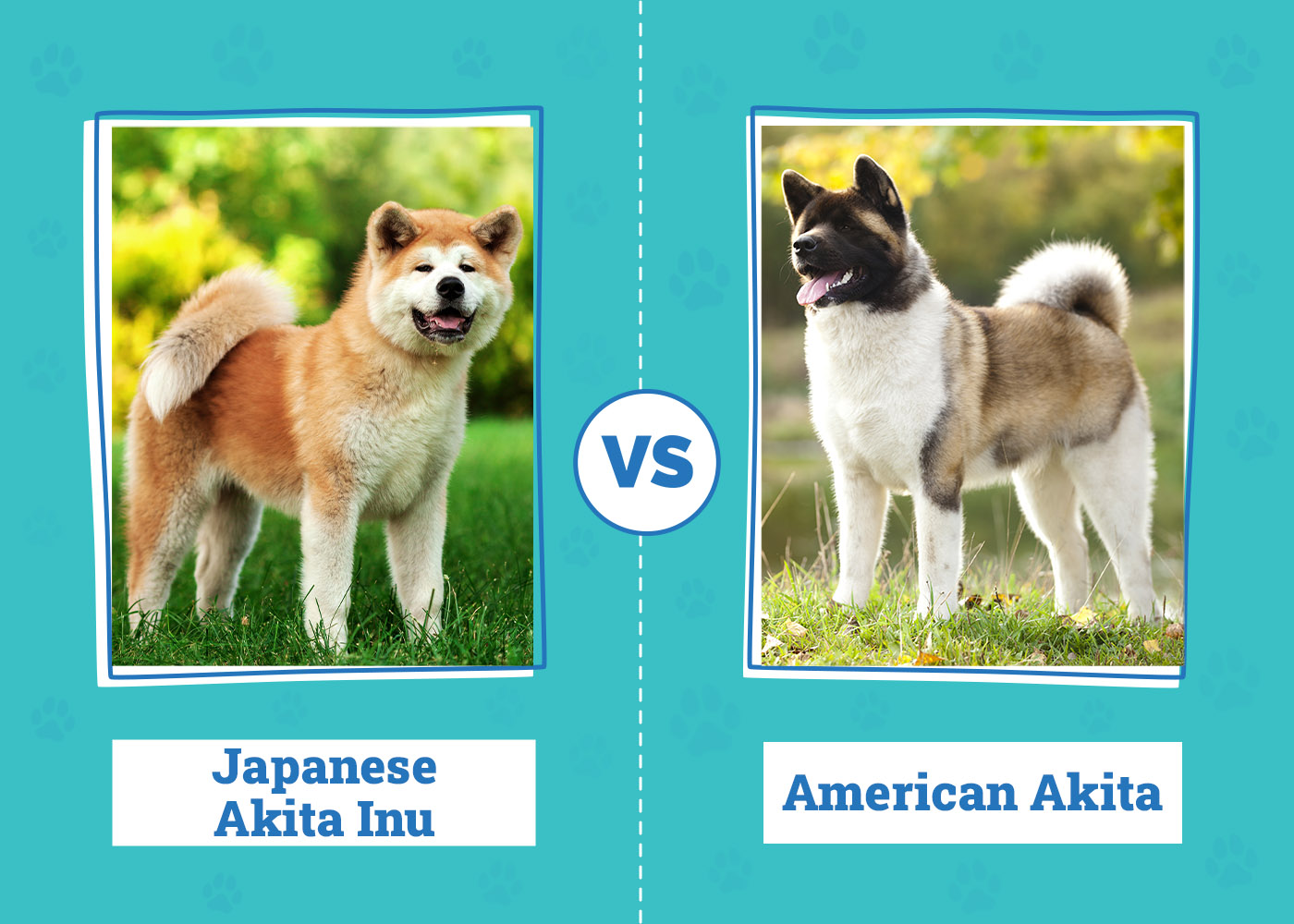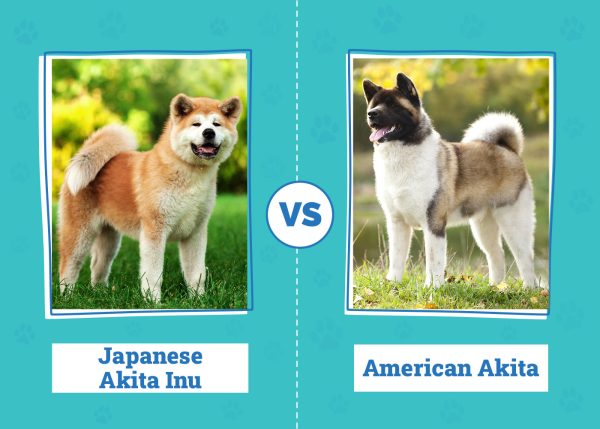Click to Skip Ahead
If you have your heart set on an Akita but are unsure whether to go for the Japanese or American, you might wonder what the differences between them are to help you make this difficult decision.
Both breeds are very similar, but there are noticeable differences that can help you settle on a decision. The American Akita, for example, is slightly bigger than their Japanese counterpart in height and weight. They are available in more colors and were originally bred to be guard dogs, while the Japanese Akita Inu was bred for fighting and hunting.
Below, we’ve highlighted everything there is to know about these majestic dogs. Hopefully, by the end of this article, you’ll be one step closer to picking your newest pet!

Visual Differences
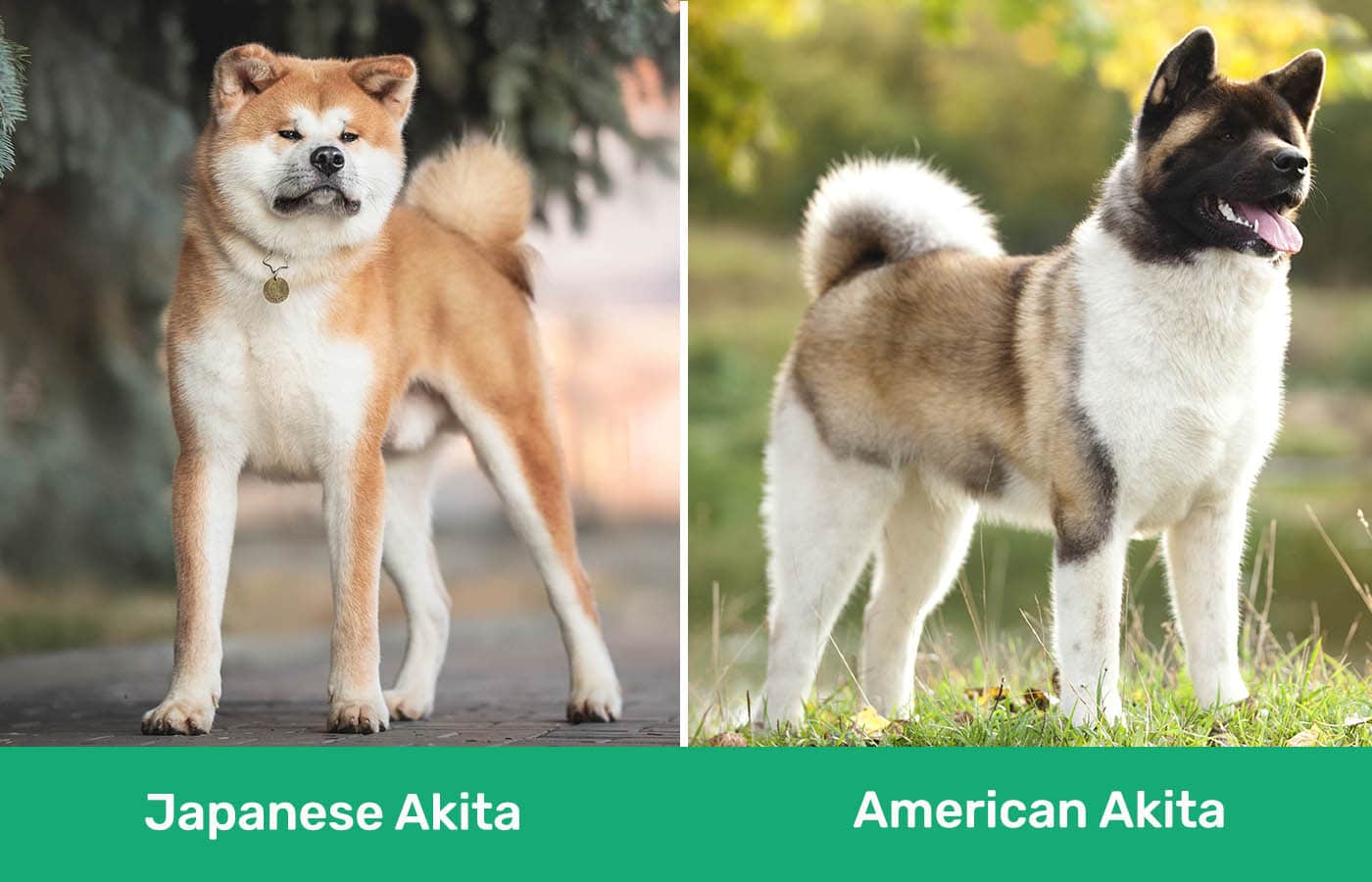
At a Glance
- Average height (adult): 25–27.5 inches
- Average weight (adult): 55–75 pounds
- Lifespan: 10–12 years
- Exercise: 1+ hours a day
- Grooming needs: Excessive
- Family-friendly: Yes
- Other pet-friendly: Rarely
- Trainability: Intelligent, stubborn, experienced owners required
- Average height (adult): 24–28 inches
- Average weight (adult): 70–130 pounds
- Lifespan: 10–14 years
- Exercise: 5+ hours a day
- Grooming needs: Moderate
- Family-friendly: Yes
- Other pet-friendly: Rarely
- Trainability: Intelligent, short-tempered, experienced owners required
Japanese Akita Inu Overview
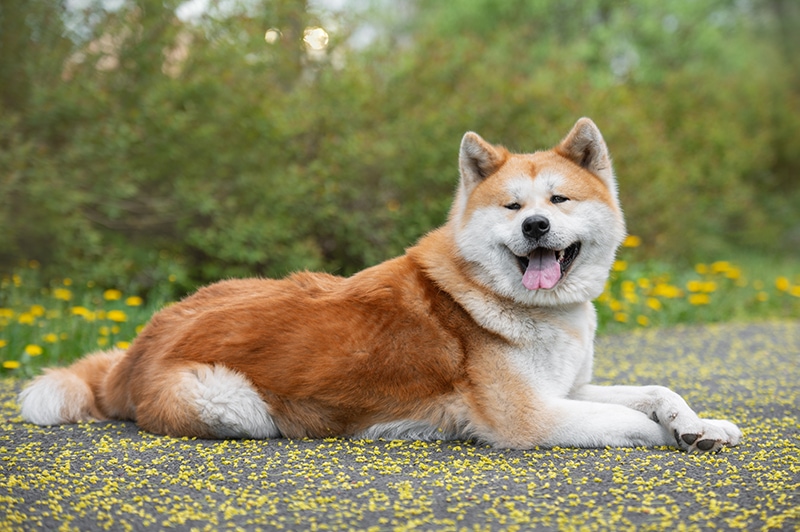
The Japanese Akita Inu is a muscular, courageous dog that is easy to fall in love with, but that can also be said for the American Akita. However, the Japanese Akita Inu is a much older breed with a long history of fighting other dogs and hunting. They’re now loyal companion dogs, but they are not suitable for every family.
Personality / Character
The Japanese Akita Inu is known for being stubborn but also incredibly loving; they do better with older children and have been known to show less frustration with children than the American Akita. They can be aggressive toward other dogs of the same sex, and for both these reasons, early socialization is crucial. They aren’t needy or highly energetic, so they will only require a moderate amount of exercise.
Training
Training is required when you have a Japanese Akita Inu, but they won’t make it easy for you. Their intelligence and stubborn streak mean you must be an experienced dog owner to take on this challenge. Positive reinforcement and consistency are necessary; if they sense a crack in your resolve, they will take advantage of it. It’s best to keep training sessions short to keep them engaged, and if they seem distracted and uncooperative, it’s better to stop and resume training later.
Ancestry and Breeding
The Japanese Akita Inu originated in 1600 in the province of Akita, Japan, and was initially bred to be a successful fighting dog. However, in the late 19th century, other breeds were imported in to fight, and the Akita’s popularity suffered. However, they were able to make the seamless switch into being a hunting dog.
They are now wonderful companions and guard dogs that have a fierce loyalty to their owners while being wary of strangers.

Size and Appearance
Japanese Akita Inus are generally a little smaller than American Akitas, ranging from 55 to 75 pounds. While they are shorter, it usually isn’t by much, as they stand between 25 and 27.5 inches. The Japanese Akita Inu has what has been likened to a foxlike head, and they tend to be slightly less muscular than the American Akita. They have thick, dense coats that shed frequently and need to be brushed at least three times a week to reduce loose hair and stay healthy.
Suitable For:
The Japanese Akita Inu is perfect for an experienced dog owner with no other pets in the house. They get along well with children if they are older and your dog has been socialized early on. You will also need to teach your children how to act around your Japanese Akita Inu since they don’t react well to disrespect or mistreatment, whether it’s accidental or not.

American Akita Overview

The American Akita is a much newer breed than the Japanese Akita Inu, and one of the first to enter the United States was adopted by Hellen Keller in 1937. However, the breed didn’t become popular in the country until the 1950s.
Personality / Character
The American Akita doesn’t get along well with other pets in the house. They can live with older children but have a slightly shorter temper than the Japanese Akita Inu. They are a quiet, loving dog that needs slightly more exercise than their counterpart.
The American Akita is not a clingy dog but demands more attention from their owners than the Japanese Akita Inu. So, along with their training and socialization needs, the American Akita will require daily walks and play sessions to stay well-behaved.
Training
While both breeds are known to have a stubborn streak, the American Akita is less stubborn. However, training an American Akita is not easy and requires an owner who’s experienced with large dogs and can tolerate their independence. Using positive reinforcement to shape the American Akita into a well-behaved pup is essential, and they don’t respond well to harsh punishments or negative reinforcement.
Ancestry and Breeding
The American and Japanese Akitas were considered to be the same breed until the end of World War II when soldiers brought Akitas back to the States with them from Japan. While American Akitas make excellent companion dogs, their wariness of strangers and fierce loyalty to those they love still make them fantastic guard dogs, which is what they were originally bred in the States to be.
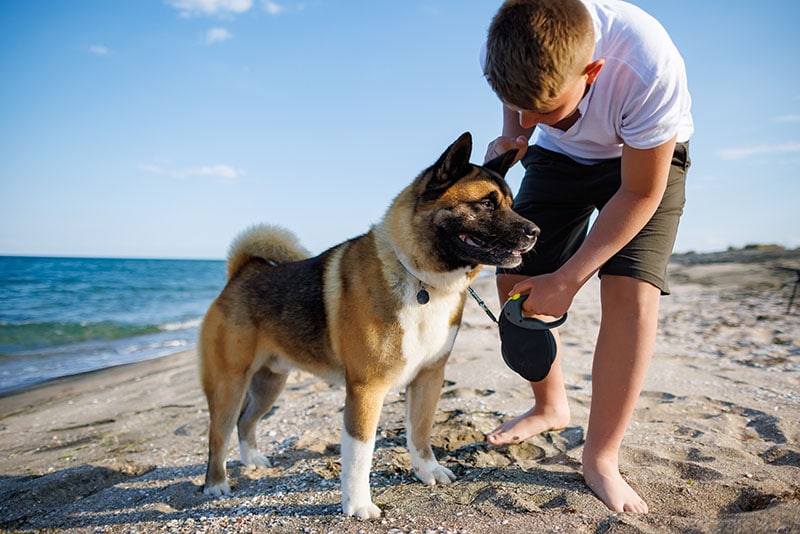
Size and Appearance
The main difference between these two Akitas is their size. The American Akita can weigh 70 to 130 pounds and, despite this extra weight, stands at 24 to 28 inches, which is slightly larger than the Japanese Akita Inu. They are a more muscular, powerful dog with a head that is broader and more bear-like than the Japanese Akita. They have thick, double-coated fur, erect ears, and a muscular frame.
Suitable For:
The American Akita is perfect for families without children and other pets, but if socialized and trained early enough, they can get along with older children in the house. However, they are less forgiving than the Japanese Akita Inu regarding children and must be supervised when interacting with them. They require an experienced owner with the time, patience, and energy to spend on training, socialization, and quality time.
Frequently Asked Questions
Are Japanese Akita Inus and American Akitas Healthy Breeds?
Akitas, in general, are quite healthy dogs, but they are prone to some health conditions.
Conditions to be aware of include:
- Cataracts
- Hip dysplasia
- Hypothyroidism
- Itchy skin
- Microcytosis
- Patellar luxation
- Retina dysplasia
- Vestibular syndrome
- Von Willebrand’s Disease
Why Are Both Breeds Different in Appearance?
You might wonder if creating differences in the American and Japanese varieties was on purpose. When the Akita Club of America, known at the beginning as the Akita Kennel Club, was first formed in 1956, targeted breeding occurred in the United States. Japan refused to recognize the American line, and alongside this, the American Kennel Club (AKC) cut off any more Japanese import registrations from 1972 until 1992.
During this time, the differences between the Japanese Akita Inu and American Akitas were so great that they couldn’t be considered the same breed. This led to the Fédération Cynologique Internationale (FCI) splitting both breeds in 2000.

Which Breed Is Right for You?
There are only a few differences between the Japanese Akita Inu and the American Akitas besides their size. They might seem like subtle differences, but they are important to note. Neither breed does well with pets, and they require an experienced owner. If you have older children, both dogs can be trained and socialized to get on with them, but the Japanese Akita Inu is slightly more forgiving than the American Akita.
While both have an independent, stubborn streak, the American Akita is slightly less stubborn, but don’t let that fool you into thinking that will make them easy to train; they’re intelligent and strong, so you will need to set clear, consistent boundaries to ensure they know who is boss. If you prefer a slightly smaller big dog for your home, the Japanese Akita Inu is ideal, but they still need daily exercise and a large yard to explore.
Featured Image Credit: (L) Olga Aniven, Shutterstock | (R) otsphoto, Shutterstock

